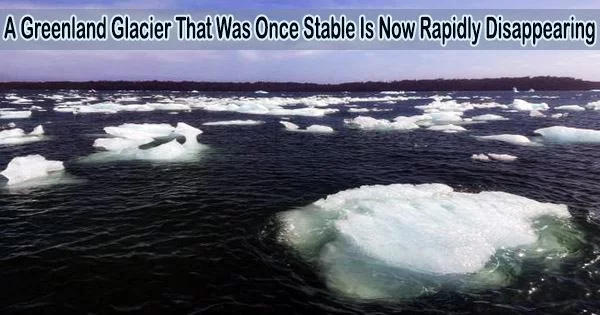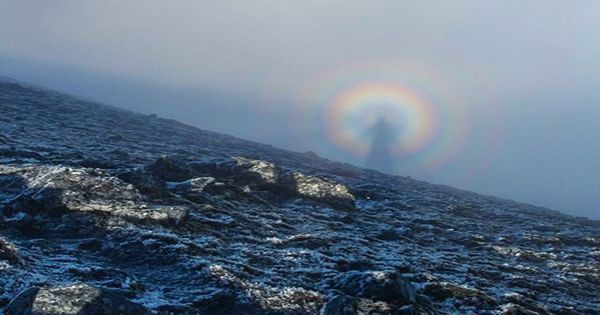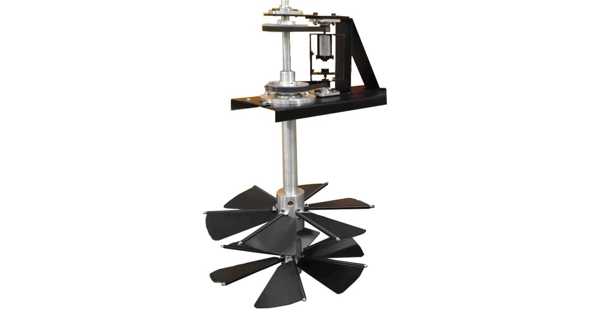According to a new study, one of Greenland’s formerly most stable glaciers is now retreating at an unheard-of rate as ocean temperatures rise due to climate change.
The Steenstrup Glacier in Greenland retreated by nearly 5 miles, thinned by about 20%, doubled the volume of ice it discharges into the ocean, and quadrupled in velocity between 2018 and 2021, according to a team led by researchers at The Ohio State University.
According to the study, Steenstrup is currently in the top 10% of glaciers that contribute to the overall ice discharge for the entire region since such a rapid transformation is so extraordinary among Greenland ice formations.
The study was published today in Nature Communications.
The Steenstrup Glacier is a component of the Greenland Ice Sheet, a mass of ice that makes up about 80% of the largest island in the world and is the single largest source of global sea rise from the cryosphere, the region of the Earth’s biosphere that contains all of its frozen water.
The area is steadily contracting as a result of the loss of hundreds of billions of tons of ice annually brought on by global warming, despite the region’s critical role in maintaining the balance of the world’s climate system.
Much of this loss over the past few decades has been attributed to tidewater glaciers, which touch the ocean, and their rapid ice discharge. Many glaciologists think that the warming waters being carried from the Atlantic into Greenlandic fjords, important maritime gateways that can affect the stability of nearby glaciers and the wellbeing of arctic ecosystems, can explain the current increase in ice flow.
In the United States, sea level rise poses a particular risk to coastal cities in places like Florida or Louisiana. But that doesn’t necessarily mean it’s too late to stop such a future from happening. If climate policies evolve rapidly, humans might have a chance at halting the worst of sea level rise.
Thomas Chudley
The research team aimed to test that theory by examining a glacier in the southeastern region of Greenland called K.I.V Steenstrups Nordre Bræ, an entity more colloquially known as the Steenstrup Glacier.
“Up until 2016, there was nothing to suggest Steenstrup was in any way interesting,” said Thomas Chudley, lead author of the study, who completed this work as a research associate at the Byrd Polar and Climate Research Center. Chudley is now a Leverhulme research fellow at Durham University in the UK.
“There were plenty of other glaciers in Greenland that had retreated dramatically since the 1990s and increased their contribution to sea level rise, but this really wasn’t one of them.”
According to geologists, Steenstrup had not only remained stable for decades but was also often unaffected by the rising temperatures that had caused so many other glaciers in the area to become unstable. This was probably because of its isolated location in shallow waters.
The scientists didn’t understand Steenstrup was probably melting because of abnormalities in deeper Atlantic water until Chudley and his team assembled observational and modeling data from prior remote sensing analyses on the glacier.
“Our current working hypothesis is that ocean temperatures have forced this retreat,” Chudley said. “The fact that the glacier’s velocity has quadrupled in just a few years opens up new questions about how fast large ice masses can really respond to climate change.”
“In recent years, glaciologists have been able to use satellite data to estimate the potential volume of glacial ice stored at the poles and how it might affect current sea levels. For instance, if the Greenland Ice Sheet were to melt, Earth’s sea levels could rise by nearly 25 feet. In contrast, if the ice sheet in Antarctica were to fall apart, it’s possible that oceans would rise by nearly 200 feet,” Chudley said.
The collapse of the West Antarctic Ice Sheet has the potential to raise sea levels by nearly six feet this century, but the collapse of Greenland and Antarctica would take centuries.
As around 10% of the planet’s population lives in low-lying coastal zones, Chudley said that any significant rise in sea level can cause increased risk to low-lying islands and coastal communities from storm surges and tropical cyclones.
“In the United States, sea level rise poses a particular risk to coastal cities in places like Florida or Louisiana, Chudley said. But that doesn’t necessarily mean it’s too late to stop such a future from happening. If climate policies evolve rapidly, humans might have a chance at halting the worst of sea level rise,” Chudley said.
Overall, Steenstrup’s unusual behavior shows that even glaciers that have been stable for a long time are vulnerable to abrupt and rapid retreat if warmer oceans start to encroach and affect new habitats.
The study comes to the conclusion that other glaciers of a similar size also merit attention because of their potential to retreat as a result of rising waters, even though it states that continuing scientific observation of the Steenstrup Glacier should be a priority.
Knowing more about these interactions may help us understand how glaciers survive in other parts of the world and perhaps serve as a predictor of future changes to these settings.
“What’s happening in Greenland right now is kind of the canary in the coal mine of what might happen in West Antarctica over the next few centuries,” Chudley said. “So it would be great to be able to get into the fjord with real on-the-ground observations and see how and why Steenstrup has changed.”
NASA supported this work. Other Ohio State co-authors were Ian M. Howat and Adelaide Negrete of the Byrd Polar and Climate Research Center. Michalea D. King of the University of Washington was also a co-author.
















